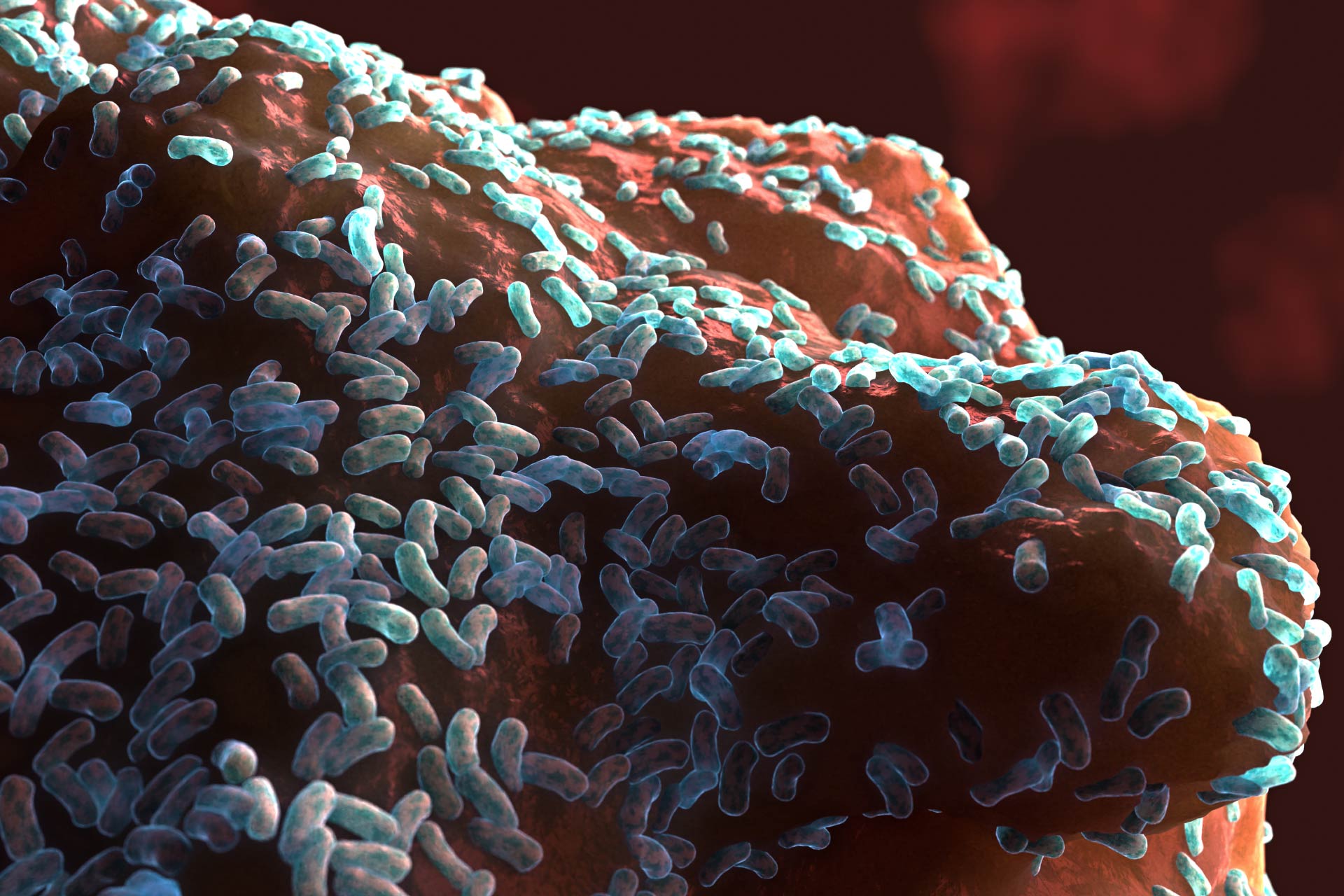• Biofilm protection
• Increased adhesion
What is already known on this topic
Transferring beneficial bacteria to the intestine can modulate the microbiota composition in ways that help to prevent and treat many conditions. But several factors—including the gastrointestinal environment—prevent beneficial bacteria from colonizing the intestine.What this research adds
Researchers have devised a strategy that uses bacterial biofilms to increase the ability of the gut microbiota to survive and reside in the gastrointestinal tract. Biofilm-coated bacteria showed higher resistance and improved adhesion to the intestine of mice and pigs. The microbes also helped to clear Staphylococcus aureus infections from the intestine of mice.Conclusion
The findings suggest that biofilm-coated bacteria could be used to treat conditions such as gastrointestinal infections as well as respiratory and reproductive tract infections.
Transferring beneficial bacteria to the intestine can modulate the microbiota composition in ways that help to prevent and treat many conditions, but several factors—including the gastrointestinal environment—prevent beneficial bacteria from colonizing the intestine. Now researchers have developed an approach that uses bacterial biofilms to increase the ability of the gut microbiota to survive and reside in the gastrointestinal tract.
The findings, published in Science Advances, suggest that biofilm-coated bacteria could be used in a broad range of biomedical applications. “The characteristic of self-producing, coated bacteria can generate a long-term beneficial effect for the treatment of [gastrointestinal tract] infections,” the researchers say.
To survive in extreme environments, bacteria naturally produce biofilms, which help bacterial colonies to attach to surfaces and fight threats such as antibiotics and the host immune system. Inspired by the many functions of natural biofilms, a team of researchers led by Jinyao Liu at Shanghai Jiao Tong University in China speculated that gut microbes coated with a biofilm could acquire increased resistance and adherence to the gastrointestinal tract.
Biofilm protection
To test the properties of biofilm-coated bacteria, the researchers used Bacillus subtilis, a gut bacterium that works together with other beneficial microbes to support digestion and promote immune and digestive system health.
To determine whether biofilm-coated Bacillus subtilis could safely survive the low pH in the stomach, the researchers mixed the bacteria with a fluid that mimicked the gastric fluid. After four hours, the biofilm coating protected the microbes from the acidic environment. The coating also helped to keep the survival rate of Bacillus subtilis at a level of nearly 30% after four hours of exposure to bile acids.
Increased adhesion
Next, the team assessed whether the biofilm coating could improve adhesion to the intestine of mice. Compared to uncoated and partially coated bacteria, biofilm-coated bacteria showed a 69- and 191-fold greater adhesion to the large intestine and cecum, respectively. The increased levels of biofilm-coated bacteria in the gut persisted for up to 120 hours, the researchers found.
Biofilm-coated bacteria also showed higher resistance and improved adhesion to the intestine of pigs, which are a model of human organ systems. What’s more, the microbes helped to clear Staphylococcus aureus infections from the intestine of mice.
The findings suggest that coated bacteria can help to treat a variety of conditions, the researchers say. “With the ability to survive and reside in a complicated environment, we anticipate the use of probiotics self-coated with biofilms to treat other diseases, such as respiratory and reproductive tract infections,” they say.











